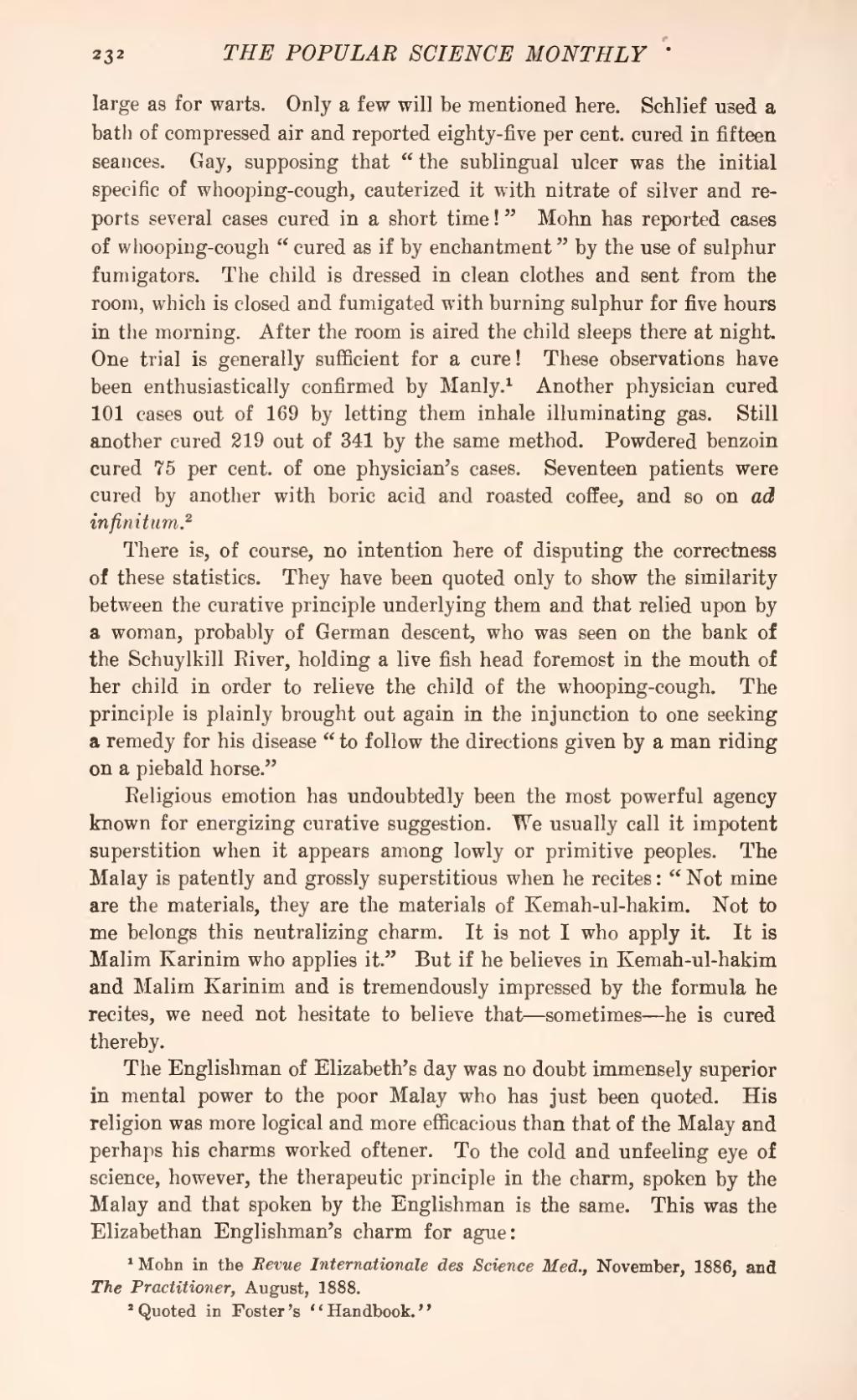large as for warts. Only a few will be mentioned here. Schlief used a bath of compressed air and reported eighty-five per cent, cured in fifteen seances. Gay, supposing that "the sublingual ulcer was the initial specific of whooping-cough, cauterized it with nitrate of silver and reports several cases cured in a short time!" Mohn has reported cases of whooping-cough "cured as if by enchantment" by the use of sulphur fumigators. The child is dressed in clean clothes and sent from the room, which is closed and fumigated with burning sulphur for five hours in the morning. After the room is aired the child sleeps there at night. One trial is generally sufficient for a cure! These observations have been enthusiastically confirmed by Manly.[1] Another physician cured 101 cases out of 169 by letting them inhale illuminating gas. Still another cured 219 out of 341 by the same method. Powdered benzoin cured 75 per cent, of one physician's cases. Seventeen patients were cured by another with boric acid and roasted coffee, and so on ad infinitum.[2]
There is, of course, no intention here of disputing the correctness of these statistics. They have been quoted only to show the similarity between the curative principle underlying them and that relied upon by a woman, probably of German descent, who was seen on the bank of the Schuylkill River, holding a live fish head foremost in the mouth of her child in order to relieve the child of the whooping-cough. The principle is plainly brought out again in the injunction to one seeking a remedy for his disease "to follow the directions given by a man riding on a piebald horse."
Religious emotion has undoubtedly been the most powerful agency known for energizing curative suggestion. We usually call it impotent superstition when it appears among lowly or primitive peoples. The Malay is patently and grossly superstitious when he recites: "Not mine are the materials, they are the materials of Kemah-ul-hakim. Not to me belongs this neutralizing charm. It is not I who apply it. It is Malim Karinim who applies it." But if he believes in Kemah-ul-hakim and Malim Karinim and is tremendously impressed by the formula he recites, we need not hesitate to believe that—sometimes—he is cured thereby.
The Englishman of Elizabeth's day was no doubt immensely superior in mental power to the poor Malay who has just been quoted. His religion was more logical and more efficacious than that of the Malay and perhaps his charms worked oftener. To the cold and unfeeling eye of science, however, the therapeutic principle in the charm, spoken by the Malay and that spoken by the Englishman is the same. This was the Elizabethan Englishman's charm for ague:
